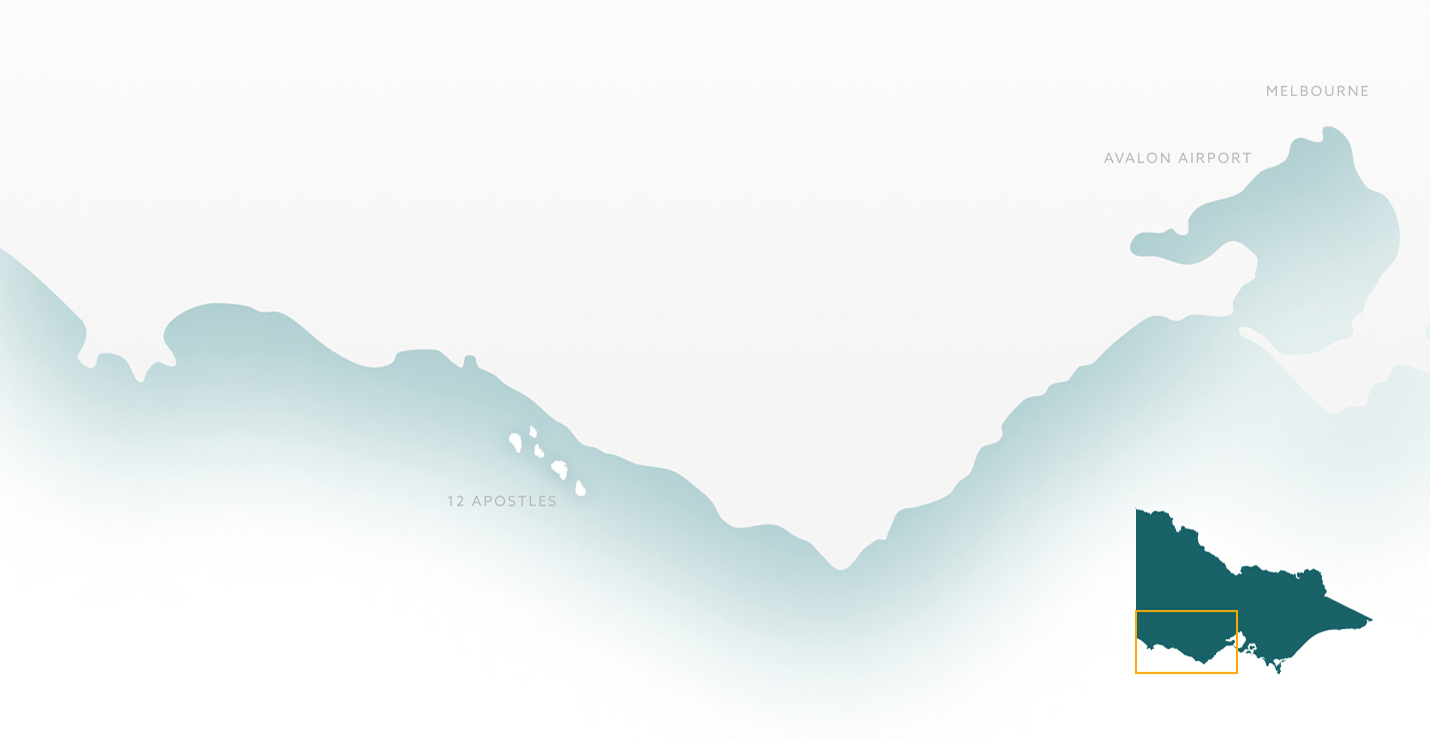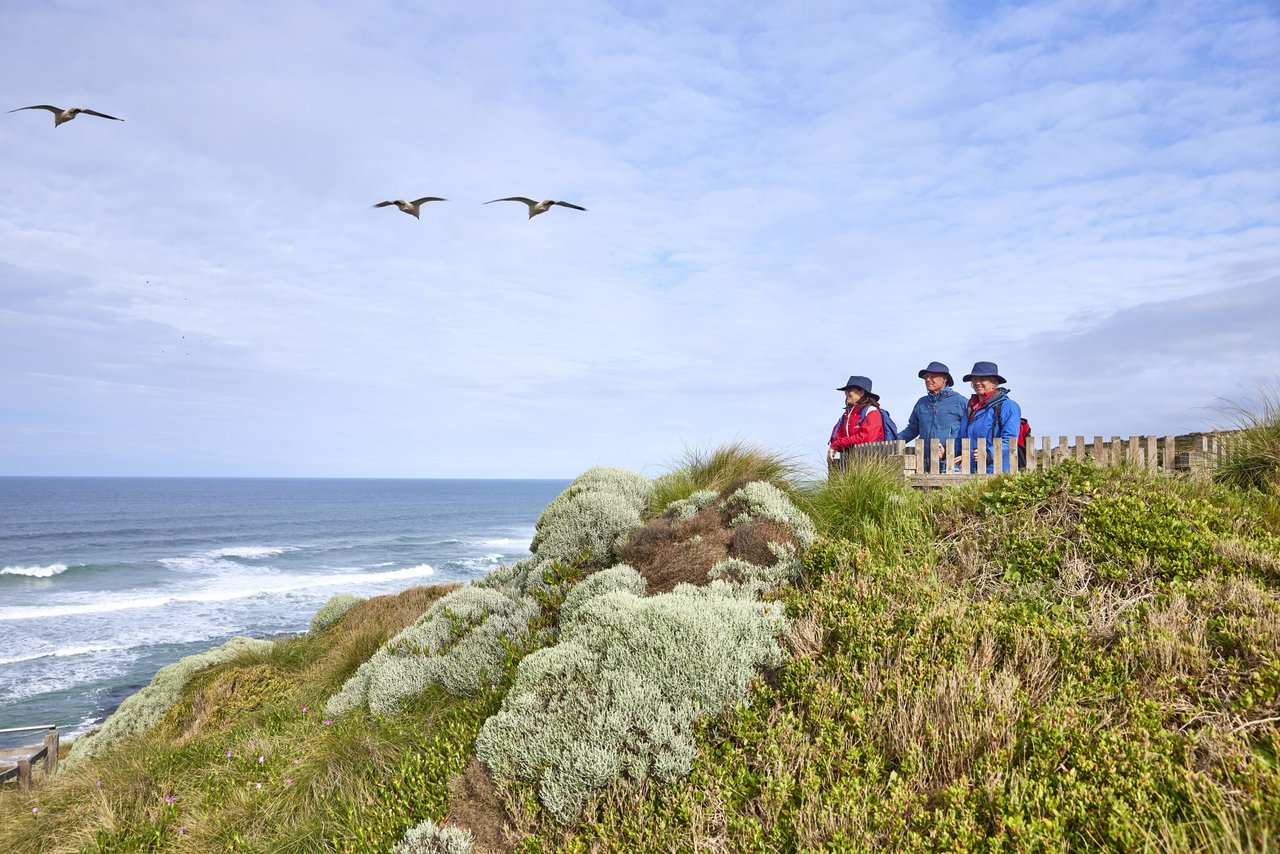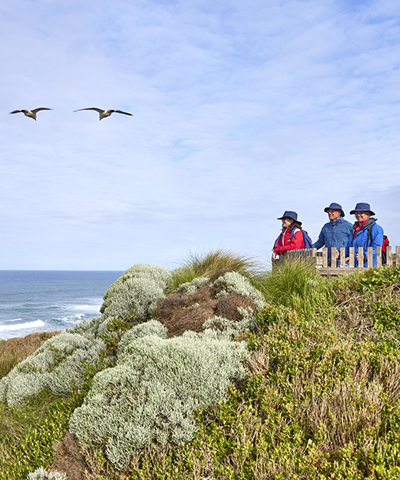

I grew up with the Otways National Park as my backyard, so it’s an incredibly special place for me that’s close to heart.
Now, together with my wife Lizzie, we dedicate our lives to researching wildlife and their living environment in the Otways National Park through the not-for-profit Cape Otway Conservation Ecology Centre.
For domestic and international visitors planning to visit the Great Ocean Road this winter, here are some ways to find the wild inhabitants of the Otways, plus some of my favorite natural attractions off-the-beaten track.
1. Be an eco-researcher
At the Cape Otway Conservation Ecology Centre, we engage with and educate the broader global community about our research and initiatives. One of the best ways to see and understand these Australian animals in their natural environment is to stay at our award-winning Great Ocean Ecolodge and venture into the forest with one of our researchers. You’ll make life-long memories and go home with a sway of stories to tell, whilst contributing to our vital conservation work.
2. Hide, wait and watch for wildlife
The Otways are magnificent this time of year as the winter rainfall brings so many things alive — from the raging waterfalls like Triplet Falls, to the colourful fungi and tiny wildflowers on the forest floor. Find a deep place in the bush; be still, listen and watch. A wallaby may hop past, a butterfly may flutter by, or a flock of raucous parrots may land in the trees beside you. Look up a eucalypt tree and you’ll likely see one of our endangered koalas snoozing or feasting on leaves. It’s a game of patience, but one that rewards those who can wait it out.
3. Explore the mammoth forests & fairytale waterfalls
The Aire River area has some world-class natural sights including a 60-metre high Californian Redwood forest (think The Gruffalo!), which was planted for logging in 1939, but thankfully never felled. Then a little off the beaten track there’s Hopetoun Falls with a gigantic 30 metre plummet, and the beautiful Beauchamp Falls close by. At Hopetoun Falls, you can take in the view from an upper platform just 20 metres from the car park. But I recommend descending the 200-odd stairs that wind through the tree ferns to the base of the falls. If you’re visiting this part of the Otways, don’t rush; take your time and camp for a few days on the western side of the Aire River just off Sand Road.
4. Put Point Franklin on your list
I love the Great Ocean Road coastline in winter, as more often that not you have the entire beach to yourself. You really know you’re alive when that wind whips across Bass Strait and the Southern Ocean. One of my favorite places is Point Franklin, the southernmost point in Western Victoria. It’s an undiscovered little hideaway covering about four kilometres of rugged & rocky shoreline dotted with small beaches and bays. I don’t think there is any other place that better showcases the diversity of the Great Ocean Road coastline in one spot. If you get down there, remember to always keep your eyes peeled for the Southern Right Whales at this time of year.
My big travel tips:
-Watch closely in the forests and woodlands for the gorgeous Scarlet and Flame robins that come to live in the Otways every winter.
-If you’re continuing to South Australia via the Princes Highway, stop at Cape Bridgewater near Portland to see the ancient limestone Petrified Forest.
Best places to stay:
-Deep Blue Hotel and Hot Springs, Warrnambool (a great base for whale watching)
-Holiday Great Ocean Road (if camping’s not your thing)





Sign up to get the latest deals, tours & events along the Great Ocean Road
Great Ocean Road Regional Tourism acknowledges the Traditional Custodians of the Great Ocean Road region the Wadawurrung, Eastern Maar & Gunditjmara. We pay our respects to their Elders, past, present and emerging. We recognise and respect their unique cultural heritage and the connection to their traditional lands. We commit to building genuine and lasting partnerships that recognise, embrace and support the spirit of reconciliation, working towards self-determination, equity of outcomes and an equal voice for Australia’s first people.